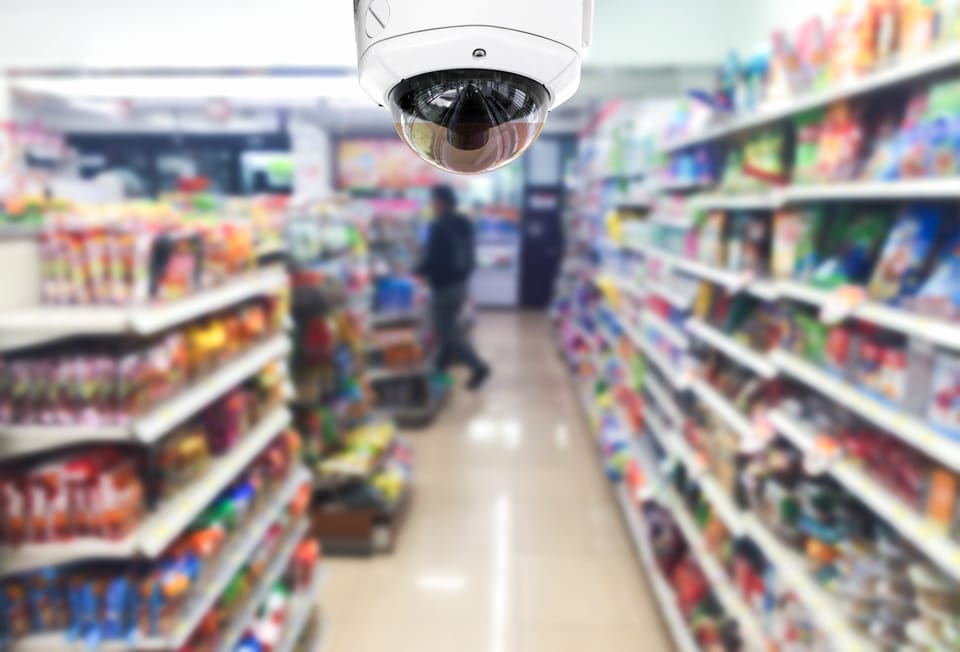High-tech adoption by retail chains to combat shoplifting

Retail chains in the UK invested £1.8 billion in 2024 as they increased their spending on hiring additional security personnel, and adopting more CCTVs, implementing anti-theft technologies and bodycams. The surge in spending on preventative technologies is significant as almost all leading retail chains in the UK are currently in some stages of adoption.
The spending, which is cited in an article published in The Big Read column of Financial Times, is no surprise considering that the retail industry loses over £2 billion pounds annually to shoplifting. The surge in shoplifting incidents is adversely impacting the profitability of businesses and the safety of store personnel as well as genuine customers. Law enforcement agencies are under increasing pressure to bring the situation under control.
Key factors that contribute to the rise in shoplifting
Several factors have contributed to the rise in shoplifting incidents in the UK. Economic instability and rising living costs have driven some individuals to steal out of necessity. The fact that very few shoplifters end up being prosecuted also does not help. Additionally, the advent of organized retail crime (ORC) has seen groups of individuals strategically targeting stores to steal high-value items, which are later sold over online marketplaces, which provide anonymity.
Challenges for law enforcement
Law enforcement agencies face numerous challenges in tackling shoplifting. The sheer volume of incidents makes it difficult to allocate resources effectively. Moreover, the involvement of organized crime syndicates requires extensive investigations and collaboration across multiple jurisdictions.
Items that are typically stolen
A wide range of items are frequently targeted by shoplifters, with high-value and easy-to-conceal products being the most common. These include:
- Electronics such as smartphones, tablets, and headphones
- Designer clothing and accessories
- Cosmetics and perfumes
- Alcohol and tobacco products
- Over-the-counter medications
- Jewelry
What happens to stolen items
Stolen items are often quickly sold on online marketplaces or through informal networks. Some organized crime groups have sophisticated methods for redistributing stolen goods, including shipping them abroad. This not only makes it difficult to trace the items but also increases the complexity of investigations for law enforcement agencies. The ease of access to platforms for selling stolen goods has fueled a cycle where theft is seen as a lucrative activity.
Retail Industry's investments in technology
In response to the escalating problem of shoplifting, retail chains are implementing various technologies as summarized in the table below:
| Technology | Description |
| Security pods | Sends alerts to control room when activity is detected, deploys response team and coordinates with police. Typically installed in the store’s aisles or parking area |
| AI platform for crime reporting | Modernizes and digitizes retail crime event reporting using AI and data-gathering techniques |
|
Computer Vision |
|
| Facial recognition | Identifies repeat offenders and known shoplifters and quickly alerts store security when a flagged individual enters the premises, enabling proactive measures to prevent theft. |
| RFID tags | Tracks merchandise throughout the store |
| Smart shelves | Detects when items are removed using weight sensors and RFID readers. |
SAI Group's Visual AI Platform for retail chains
SAI Group’s visual AI platform currently assists store networks of 3 of the top 5 retail chains in the UK. Here are some of the key benefits offered by SAI Group’s visual AI platform:
- Instant detection of aisle theft: Instantly detect when customers conceal items in their clothing or bags.
- Seamless Self-Checkout (SCO) integration: Compatible with a range of self-checkout systems for straightforward multi-vendor integration.
- Subtle but powerful: Delivers real-time prompts to the SCO monitor, enabling customers to correct errors on their own, without the involvement of the store staff.
- Instant non-payment detection: Instantly identify when customers avoid payments at the SCO.
- Empowered store staff: Keeps the store staff informed by sending notifications on the store’s hand-held terminals.
- Violence detection: Utilizes AI to detect incidents of violence within the store and sends alerts directly to the security operations centre so that resources can be mobilized appropriately.
- Legally admissible evidence: Automatically extracts and stores the video footage of incidents detected, thus enabling the store staff to report theft more easily and efficiently.
About SAI
As a leader in computer vision technology, SAI Group delivers cutting-edge, multi-modal AI solutions into retail environments. Using a unique platform approach, its technology uses existing camera systems to target losses, increase store safety, and underpin operational efficiencies.
All solutions are built from the ground up to ensure the highest levels of security and data protection, respecting the privacy expectations of the public and operating to stringent ethical standards while delivering substantial value to our clients. Globally, SAI monitors millions of transactions per day, protecting the revenues from tens of millions of product sales and hundreds of millions of customer interactions. Its models also accurately identify anti-social behaviour, aggression and violence, helping to de-escalate situations with real-time interfaces to security officers and operations centres.
